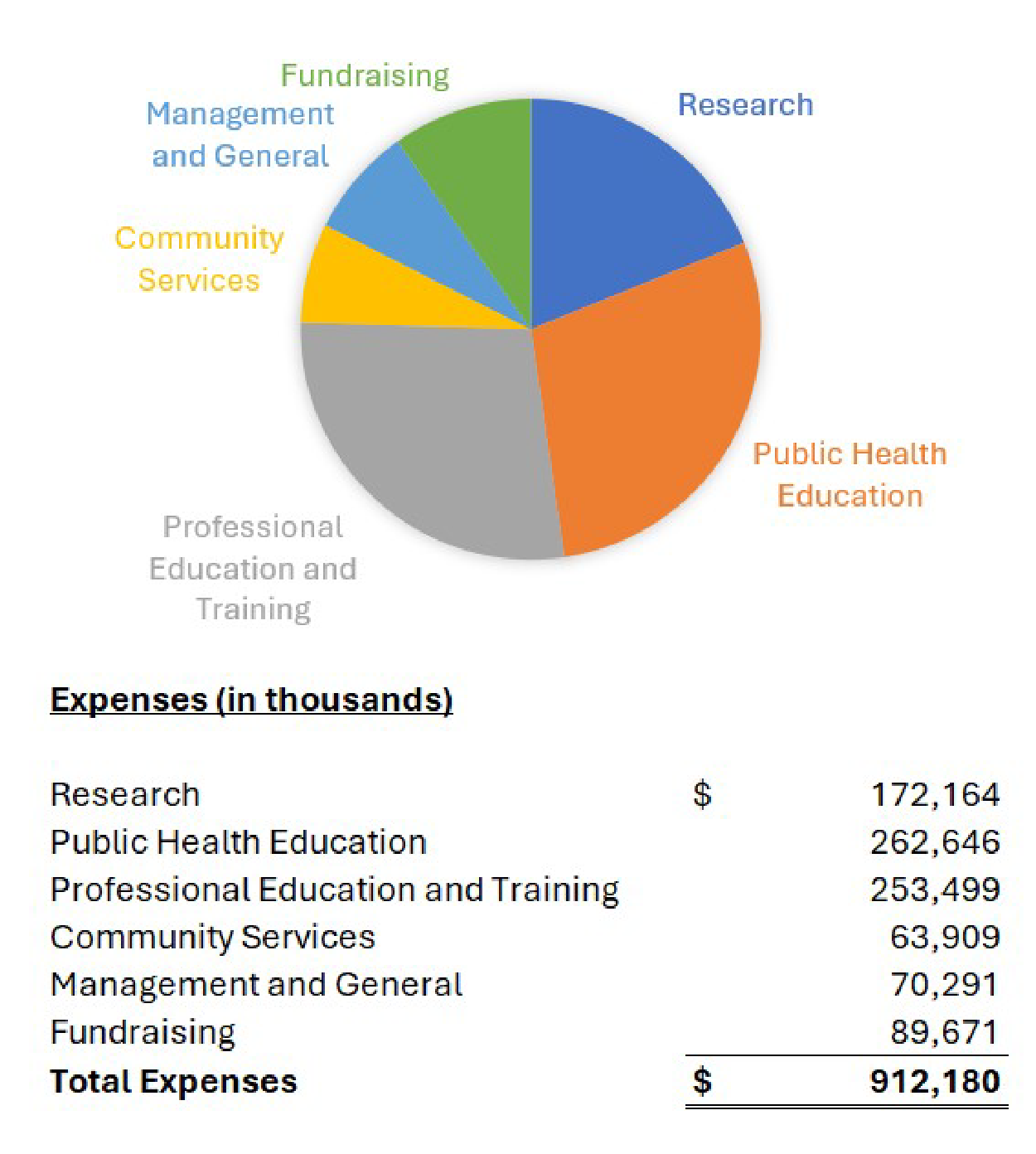Charitable Giving that Can Make a Difference
By doing a little research, you can identify nonprofit organizations that will do the most good with your donation
With the year's end now on the near horizon, millions of Americans are getting out their checkbooks, credit cards and digital wallets to make their annual donations to nonprofit organizations.

Charitable giving in the United States amounted to almost $500 billion in 2022, with individuals accounting for two-thirds of that sum and foundations and corporations making up most of the rest.
Executive pay may help you in deciding which organizations you want to support, but it should be considered in context.
Before you make that money transfer, you might want to see how effectively the nonprofits that interest you are spending your donations. It's not hard to do and will be a one-time effort because nonprofits don't often make major changes to their operations. Here's what you can find out:
How efficiently nonprofits spend their donations. Some nonprofits spend half their annual budget on operating expenses such as rent, fundraising, salaries and benefits, all of which is money not spent on their program activities: feeding the hungry, cleaning polluted rivers, sheltering the poor or rescuing injured elephants.
Clearly some spending on overhead is necessary, but if it's 50% or more of an organization's budget your money would be better spent on nonprofits that keep their operating expenses down to 25% to 30%.
How urgently they need donations. If a nonprofit with an annual budget of $10 million has $100 million in net assets, that's a decade worth of expenses. Other nonprofits that interest you likely have greater need for your support.
How much they pay their executives. A Nonprofit CEO Compensation Study by the watchdog group Excellence in Giving reviewed the financial statements of more than 400 nonprofits and found that, excluding highly paid health and university CEOs, average nonprofit CEO pay in 2021–2022 was $166,996.
However, some nonprofits, including United Way Worldwide, Boys Town and the National Audubon Society, pay their CEOs well over $1 million annually. Charity Watch, another group that tracks nonprofits' performance, has a list of 40 CEOs with salaries that exceed a million dollars.
Executive pay may help you in deciding which organizations you want to support, but it should be considered in context. "High salaries do not necessarily indicate inefficiencies, just as low salaries are not always beneficial," Charity Watch says. "Rather than perceiving a particular nonprofit executive's compensation as too high or too low based on its nominal value, appropriate salaries are better determined by considering factors such as special skills needed for the position, relevant education and experience, and the complexity of a charity's operations."
Big Pay for a Big Job
The American Heart Association's CEO, for example, receives a compensation package of more than $3 million annually. That said, she has a big job in a big organization. Whether you find an organization's salaries acceptable is your own decision.
Nonprofits disclose the salaries of their highest-paid employees on an IRS filing called Form 990. The "Compensation of Officers" lists are in Part VII of the returns, which are open to the public on the websites of the IRS and the investigative journalism organization ProPublica. Charity Watch and Charity Navigator provide their own evaluations of nonprofit effectiveness.
How much they raise, spend and save. An organization's Form 990 also provides its revenue and expenses for the current and previous year in Part X. This will show you if they ended those years with a deficit or surplus. At the bottom of that list of numbers you will see "net assets," which means money in the bank, invested in stocks and bonds or held in trusts.
Ideally, a nonprofit will have a few years' worth of operating expenses socked away to keep it afloat in case it faces a setback, such as a lawsuit, damage to property or a stock market crash.
How Nonprofits Spend Your Donations
If you want more detail scroll to "Statement of Functional Expenses" in Part IX. In that section, nonprofits break out expenses such as rent, advertising and travel. This may help you make sure there's no overspending by your standards.
How much they spend on contractors. Also in Part VII is a section called "Independent Contractors," which shows you how much an organization pays its top five outside consultants for fundraising, advertising, legal counsel and such. You can see how that compares with other organizations you are considering.
For example, Natural Resources Defense Council, one of the country's largest environmental-protection nonprofits — it had total revenue of $233 million in 2022 — paid almost $1.4 million to a contractor for fundraising mail services; that was about 6% of expenses.
By comparison, the relatively tiny but very effective environmental nonprofit Southern Utah Wilderness Alliance — total revenue $9.8 million — lists just one outside contractor, which it paid $277,000 for fundraising mail services; that was less than 3% of expenses.
Read Annual Reports
If you're not up for a deep dive into an organization's Form 990, look at the nonprofit group's annual report, which many organizations have at their web sites. While such reports are not required by law, many nonprofits use them to concisely explain what they accomplished during the year, and how.
The reports also often have easy-to-understand pie charts showing how much organizations spent on salaries, fundraising, office expenses and their programs, be it church maintenance or medical research.

Consider Giving Locally
When you look at a large, national nonprofit with a cause that interests you, consider that donating to a much smaller nonprofit supporting the same cause locally may reap bigger benefits for your home town or county.
Also remember that if you are considering donating to a national nonprofit — whether that is the Boy Scouts, Girl Scouts, Alzheimer's Association, Planned Parenthood or the Audubon Society — it may have chapters in many states, sometimes all states. Giving locally could magnify the impact you can have, so you may want to look around before mailing that check.

